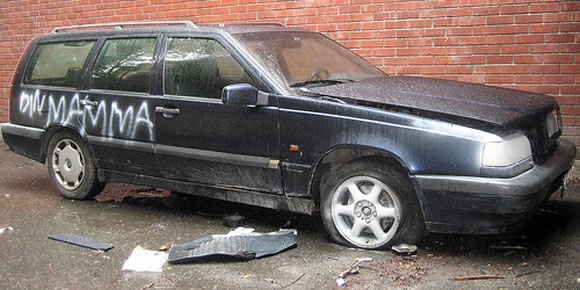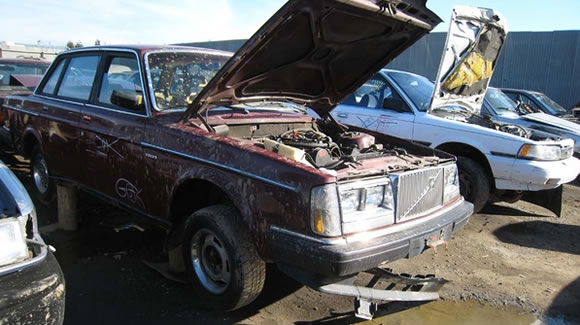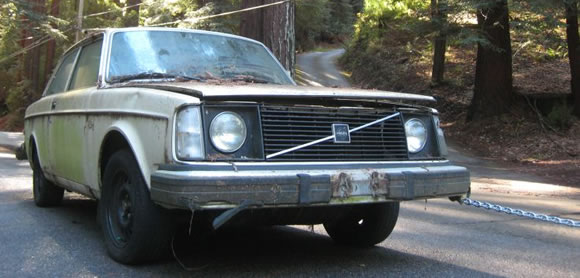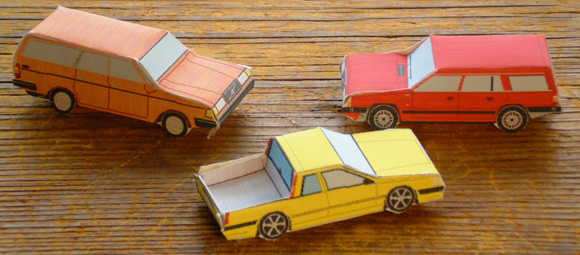
When I first skimmed this post documenting a grocery trip in a new Lambourghini Gallardo I thought the author was a pretentious douche. The Tarmac Philosopher, a writer for an auto magazine, takes the V10 monster to his local Whole Foods. When he exits the store he’s horrified to discover the car has attracted a mate:
Some ponce had moved the carts and spitefully parked a filthy, greasy, rusted Volvo 240 station wagon in Fungus Green Metallic right next to my shimmering Lamborghini. Thankfully, after close inspection, not a spot of Volvo stink had blemished the Italian beauty’s skin. I then examined the Volvo, and discovered that its finish had a substantial outer layer of bumper stickers advertising for Greenpeace, PETA, Humane Society, the Earth Liberation Front and few other vegetabalist and ecotage organizations. Not surprisingly, I also received a friendly brochure under the Lambo’s windscreen wiper condemning me forever to Hades for symbolically clubbing baby whales to death by driving an earth-warming beast-car that ran on The Man’s oilish excrement, also known as gasoline. I would have kept interestedly reading, but the whiff of cannabis wafting from the shit-Volvo’s open window started to irritate my nose, so I neatly crumbled up the brochure, and left the parking lot in a billow of CO2 emissions.
Joke was on me, though. The author is only a magazine writer in his own mind. Reality is he’s a kid living in Florida with dreams of big cars and low pay. Good luck, Joe.







